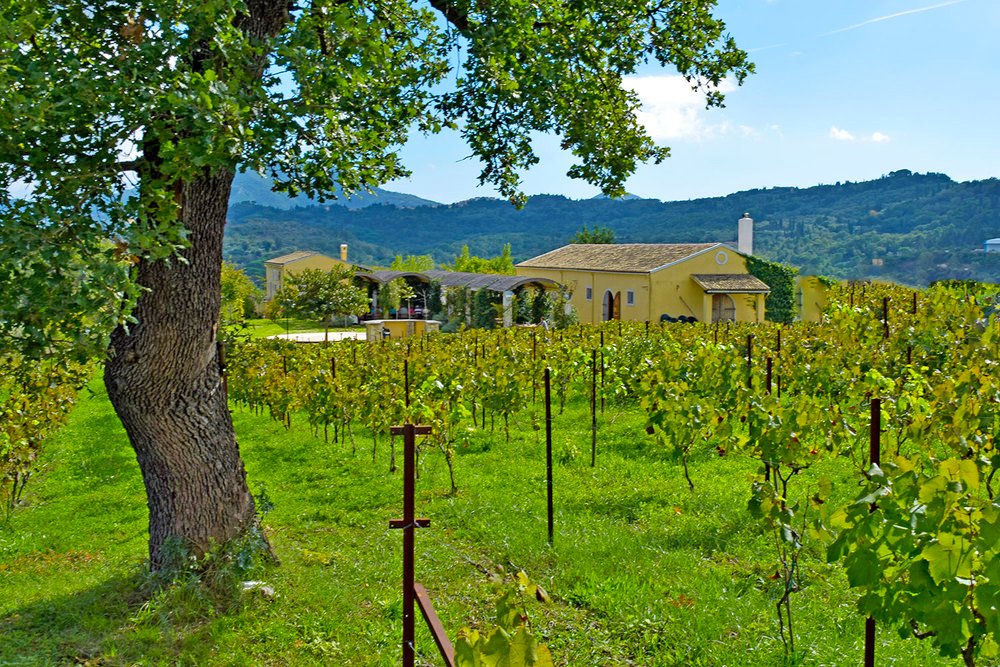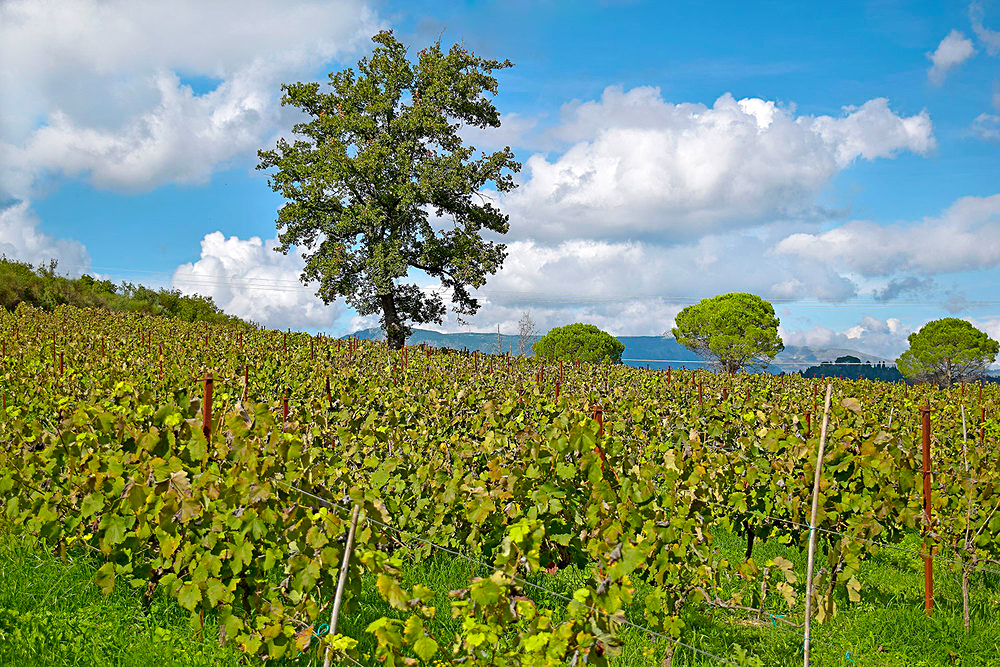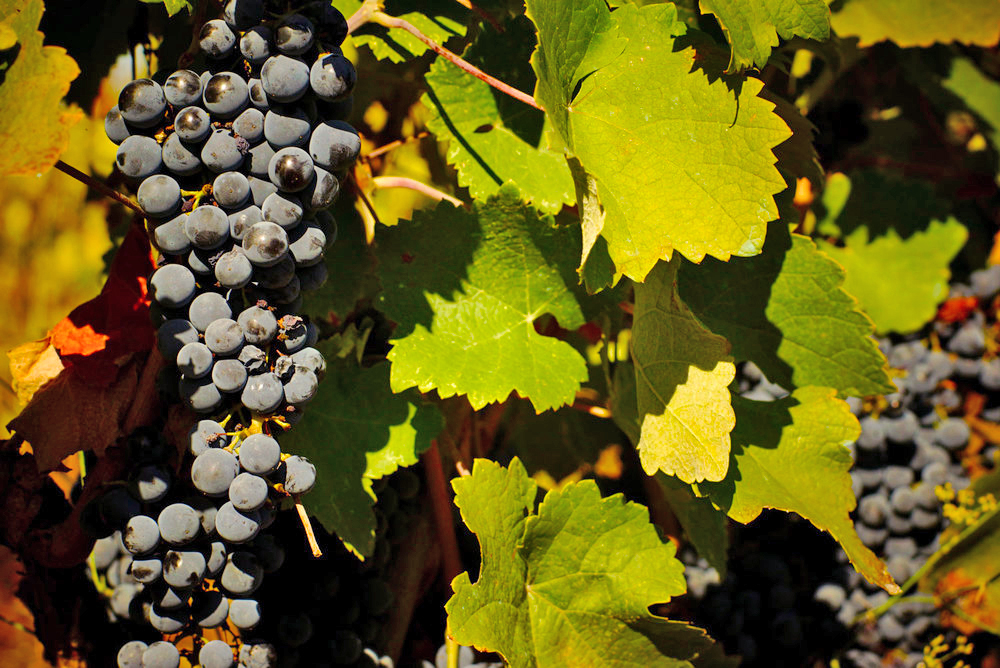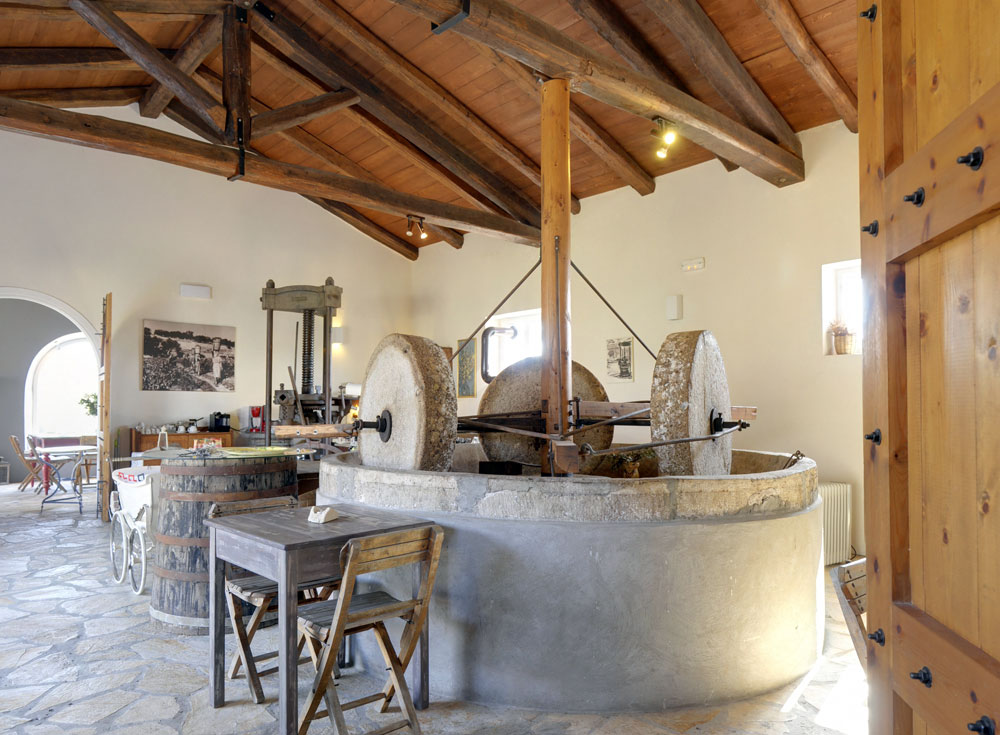Alongside the vineyard, within an estate where vine and olive cultivation existed for more than 400 years, we created a simple and adaptable space which combines the elements of traditional architecture.
Our aim is to highlight local culture through an exhibition of traditional pre-industrial equipment for the production of wine and olive oil. A video made on the premises unravels these old traditions and takes you back to a time when everything was – and will always remain – natural in this little corner of Corfu.
The grapes we grow are two of the old Corfiot varieties: Red “skopelitiko”, white “kakotrigis” and our wine is produced by the traditional methods and is aged in oak barrels.
ESTATE HISTORY
The first we know of the property is that it was acquired by our ancestors in 1600 when they emigrated from Venice to Corfu. Part of it was an olive grove and part a vineyard which were burned down in 1999.
Today the total area is about 74.000 sqm of which about 18.000 are a newly planted vineyard, part is olive grove and the rest was left to develop in to a typical Mediterranean forest.
In 2004, the old facilities were rebuild to house pre-industrial olive oil and wine making equipment.
Olive oil & Wine Museum
The buildings follow the local traditional architecture as it was developed during the long history of the island to house the two main agricultural activities of Corfu: olive-oil and wine production.
Corfu has been a wine producing island since ancient times (references can be found in Homers Odyssey). The cultivation of olive trees became widespread during the Venetian occupation of Corfu between 1386 and 1797. At the time olive oil was an important commodity not so much as food but as a source for lighting.
The wine making equipment
Manual device for crushing grapes.
The baskets were emptied one by one in this device which was standing by a big open wooden tray. By turning the wheel the must (grape juice)and the broken grapes fell in a tray.
Vat.
The must and the grapes are transferred to an open big Vat and there they are further crushed by treading on them with bare feet. The must is transferred to barrels to ferment.
Oak Barrels.
The use of oak wood for making wine barrels plays a significant role in winemaking and can have a profound effect on the resulting wine, affecting the color, flavor, tannin profile and texture of the wine.
Also a number of small tools is displayed, like “xestia” (tin measuring containers), bottling tools, corkscrews and bottles/carboys in different sizes.
THE OLIVE OIL MAKING EQUIPMENT
The equipment exhibited are a Circular Stone Olive Mill, a Cast-iron olive press, various Measurement containers, glass oil carboys (demijohn) and a barrel for preserving olives.








